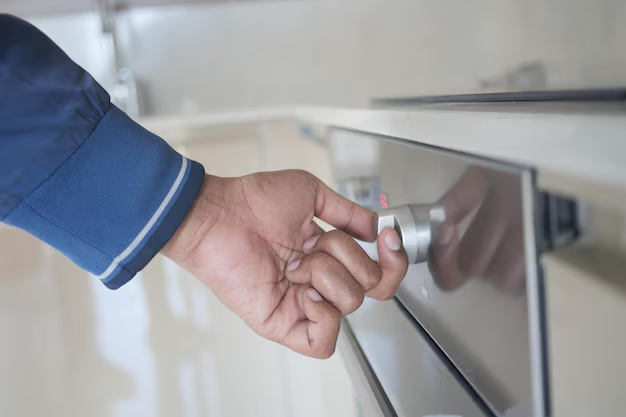Troubleshooting Your Refrigerator Ice Maker: A Comprehensive Guide to Get It Working Again
Picture this: you're hosting a summer barbecue, and just as you're preparing drinks, you realize your refrigerator's ice maker has stopped working. Ice makers are convenient appliances, but when they fail, they can quickly become a source of frustration. Don't worry—this guide delves into the nuts and bolts of fixing your refrigerator's ice maker, offering practical, user-friendly advice that guides you through common problems and solutions.
Understanding How Ice Makers Work
Before diving into troubleshooting, it's helpful to understand the basics of how an ice maker functions. At its core, an ice maker is a small machine housed inside your refrigerator. It comprises several key components:
- Water supply line: Brings water into the ice maker.
- Ice mold: Where water is frozen into ice cubes.
- Thermostat and heating element: Measures temperature and slightly warms the mold to release ice cubes.
- Ejector mechanism: Pushes out the ice cubes into the ice bin.
- Control module: Manages the ice-making cycle from filling to ejection.
Common Ice Maker Issues and Symptoms
Even with a basic understanding, pinpointing the issue with your ice maker can sometimes be challenging. Some common symptoms include:
- No ice production: The ice maker isn't making any ice at all.
- Small or hollow cubes: The ice cubes are not fully formed or are smaller than usual.
- Ice buildup: Ice clumps together in the bin.
- Unusual noises: Loud or unusual sounds during operation.
How to Diagnose and Fix Common Ice Maker Problems
Let's explore ways to address these problems, starting with the most straightforward solutions and moving to more complex issues.
1. Check the Water Supply
A functioning water supply is crucial for making ice. Here's how to ensure it's working:
- Ensure the water line is open: Check the valve behind your fridge and ensure it's not closed.
- Inspect the water filter: A clogged water filter restricts water flow. Replace it if it's overdue.
- Look for leaks or kinks: Examine the water line for any leaks or kinks that might impede water flow.
2. Verify the Ice Maker Settings
Sometimes, issues are simply due to the settings being altered or incorrectly set:
- Ice maker turned off: Confirm the ice maker is switched on.
- Freezer temperature: Ice won't form if the freezer temperature is too high; it should be set between 0 to 5 degrees Fahrenheit.
3. Inspect and Test Components
If the above measures didn't resolve the issue, inspect the internal components:
- Ice mold thermostat: If faulty, it might not allow water to freeze properly. Testing usually requires a multimeter and is best handled by experienced DIYers.
- Heating element: Check if it functions correctly; a bad heating element may prevent proper ejection of cubes.
- Control module: Consider a reset or replacement if suspected to be defective.
4. Address Any Mechanical Blockages
Physical obstructions can hinder ice production or ejection:
- Clear jammed ice cubes: Sometimes an accumulation of ice might physically block the machine.
- Inspect the ejector mechanism: Look for obstructions or damage.
Advanced Troubleshooting Steps
If you've tackled the basics without luck, consider these advanced troubleshooting steps, which might require professional assistance.
Water Inlet Valve
The water inlet valve opens to supply water to the ice maker and operates under electrical control. If damaged or malfunctioning, it may need replacing. Testing involves using a multimeter and understanding electrical components.
Ice Level Control Board
Some models come with an optical sensing board to monitor ice levels. If this component malfunctions, it could prevent ice production. Advanced diagnostics might involve testing board function and continuity.
Motor Assembly and Gears
Mechanical issues with the motor or gear assembly can prevent the ice maker from cycling correctly. Listening for motor operation or inspecting for signs of gear wear can help diagnose these issues.
Preventive Maintenance for Long-Term Reliability
Prevention is often the best solution. Here are some practices to keep your ice maker running smoothly:
Routine Cleaning
Regular cleaning of the ice mold and ejector arm prevents buildup and reduces the risk of malfunctions.
Filter Replacement
Maintain a schedule for replacing your refrigerator's water filter—it helps prevent clogs and ensures clean, fresh-tasting ice.
Monitor for Leaks
Keep an eye on water connections for any signs of leakage or wear, addressing problems early to avoid more significant failures.
Professional Service
Consider periodic professional maintenance, especially if your ice maker is critical for daily use or larger social functions.
Integrating Ice Maker Care Into Your Routine
By incorporating ice maker maintenance as part of your regular home care routine, you can significantly extend its lifespan and efficiency. Remember, each refrigerator model might have specific needs or settings, so it's wise to consult the user manual for your particular model when troubleshooting.
Ultimately, a well-maintained ice maker not only ensures an effortless supply of ice but also enhances the overall function and longevity of your refrigerator. This guide is designed to empower you to tackle common issues confidently, preserving the convenience and functionality of your kitchen.
By understanding your ice maker and engaging with its quirks and requirements, you become equipped to maintain its peak performance. Whether hosting a gathering or simply enjoying a cool drink on a hot day, a reliable ice maker is a small but mighty asset in your culinary arsenal.
